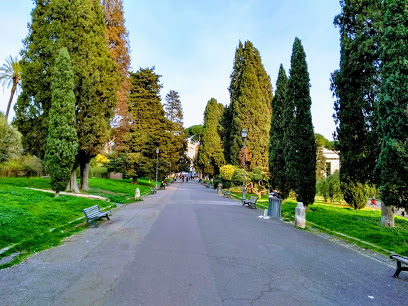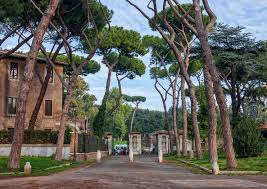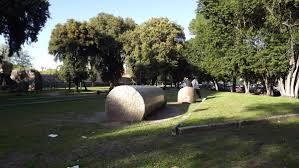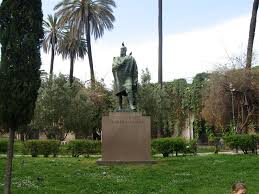The Parco del Colle Oppio extends over the homogeneous hill area, one of the seven primordial Rome primates, alternating large areas of green with large residues of great importance and interest, such as the Nero Domus Uria pavilion, the Tito and Trajan baths.
In 1871, in the context of urban planning that became necessary because of the new requirements of Rome, the area was used for public parks. But only in the context of the urban programs of Rome Mussolini, characterized by the renewal of the imperial past and the strong interest in public parks, the slopes of Colle Obeyo assumed its current structure in two different phases.
Colle Oppio was a site of extreme urbanization and architectural achievements of the Roman era.
During the Middle Ages were gradually abandoned and occupied mostly gardens and botanical gardens.
In 1871, as part of the urban planning that became necessary because of the new requirements of Rome, the area was designated for public parks and later included in the massive project to protect and promote the so-called "reserved archaeological area". But only in the context of the urban programs of Rome Mussolini, characterized by the renewal of the imperial past and the strong interest in public parks, the slopes of Colle Obeyo assumed its current structure in two different phases.
In fact between the first nucleus of the park, including the nearby area of the southern exedra infrastructure of the Trajan baths, the facing shelf of Via Labicana and the facing side of Via Mecenate, was actually built between 1928 and 1932 by architect Raffaele de Vico. The park stops at the crossroads of two main roads (Viale Mezzi and Viale della Domus Oria) with huge entrances and a rich series of fountains that have benefited from the natural slope of the places. Among this fountain of amphorae, the large nymphaeum with tuff decorations provided by A. Giorgiutti and the twin sparrows overlooking Via Labicana. Along the length of Viale della Domus Aurea is a bronze statue of Alfredo Oriani, executed by Ercol Dre in 1935. The plants offer a wonderful blend of Mediterranean plants (pine, sphinx, cypress, and daffodils), the exotic gems of the landscape garden ) And typical species of old gardens (roses, ace, laurel).
Antonio Muñoz, the director of antiquities and fine arts in the province of Rome, later arranged the upper section of the hill (1935-1936), a real archaeological garden with magnificent ruins of Trajan's baths. In the design of the area, Muñoz tends to meet the needs of urban planning and look for spectacular views at the expense of the overall vision of the huge old complex, whose unity is difficult to comprehend at the moment. The park is included in the Merry Jubilee Routes (2015-2016) where exceptional maintenance interventions have been carried out on fountains and some garden areas, with arranged roses arranged according to the Domus Aurea master plan.






